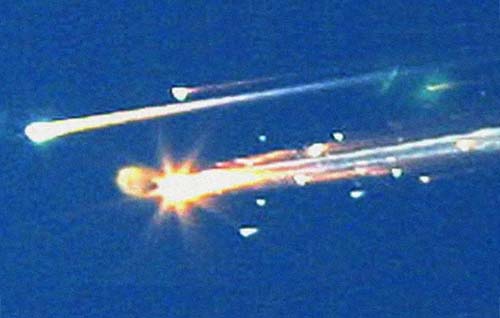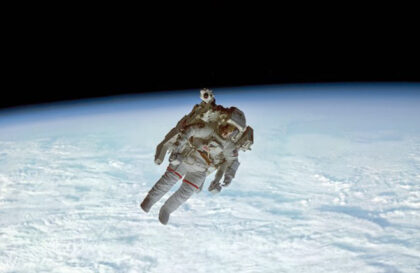Just fifteen minutes before landing, the ship broke into thousands of flaming debris, flying 5.6 kilometers per second. Seven astronauts burned up in the sky. Until the last second, the crew did not suspect a possible disaster.
What happened?
The Columbia space shuttle disaster in 2003 was a tragedy not only for the United States. The crew included the first Israeli astronaut and the first female astronaut of Indian descent. This was their first flight for some crew members, and others had already flown twice.
The lengthy investigation resulted in a 248-page report. The commission concluded that the cause of the disaster was damage to the thermal protection of the shuttle’s left wing. When analyzing the video recording of the launch, it was noticed that at the 82nd second, part of the foam insulation detached from the fuel tank, which hit and damaged the wing tiles. When the shuttle returned to the atmosphere, hot gases penetrated the resulting gap and tore the ship into pieces.
What happened next?
For two and a half years, the American shuttles were laid up. The first ship to fly after the sinking of Columbia was the Discovery. Now, 88 sensors were installed on each of its wings: 66 measured acceleration and recorded impacts, and 22 measured the temperature of the wing surface during the shuttle’s ascent into orbit.
A special digital camera was installed on the lower plane of the ship, which, during the separation of the fuel tank, was supposed to take 24 frames – one every one and a half seconds.
A special maneuver was added to the ISS for shuttle missions: the ship hovered at the station and turned over. At this time, the ISS crew was photographing the thermal protection tiles.
About the very first flight of Columbia
Credit: Wikimedia Commons (public source)
This shuttle flew immediately with people. True, the crew was greatly reduced: instead of seven astronauts, there were two. There has never been anything like this in the history of fundamentally new space systems, either before or since.
“Columbia” suffered more than its fair share: 414 thermal protection tiles were damaged. In some places, the coating was blown off in some places, and metal melted on the balancing shield over half the tile area. They write that 22 years later, after the death of his ship, its first commander, John Young, admitted: hot air then broke into the niche, threatening to damage the elements of the chassis and wing structure.
At NASA’s Kennedy Space Center in Florida, workers tow the space shuttle orbiter Columbia from the Orbiter Processing Facility to the Vehicle Assembly Building (VAB). Credit: NASA
NASA shuttles
The space shuttle program has been in development since 1971. The first shuttle, namely Columbia, flew in April 1981. His last was the 28th space launch.
NASA had a total of five shuttles. The second in a row was the Challenger, whose fate also turned out to be tragic: it died during its tenth launch on January 28, 1986. The third shuttle – Discovery – made 39 flights, the fourth – Atlantis – 33, and Endeavor, built to replace the lost Challenger, – 25. In addition, there was also the Enterprise, which became a museum, but never having been in space.
In 1985, NASA planned that each ship would make up to 100 flights into space. It turned out that launching such a ship is an extremely difficult undertaking, and their maintenance requires time and money. In practice, over thirty years of operation, 135 launches were carried out (including two disasters).
In July 2011, Atlantis made the final flight in shuttle history. The manned shuttle program was put to an end.
Banner image: Photo/Dr. Scott Lieberman
Image credit:
https://www.sandiegouniontribune.com
https://sv.m.wikipedia.org
https://appel.nasa.gov





